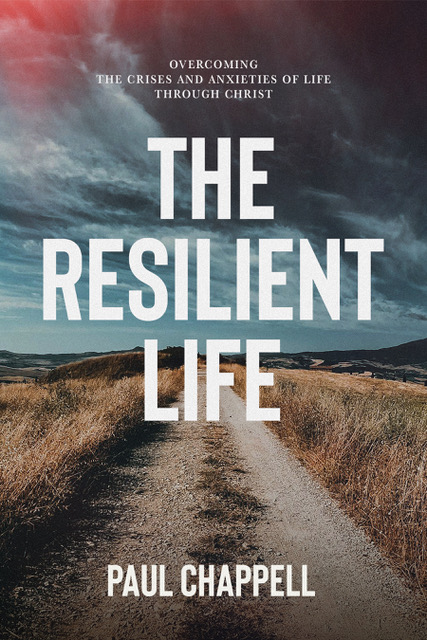



Tel Megiddo
“Megiddo” or “Megiddon” = me-gid’o; “place of troops” – located on the southern rim of the plain of Esdraelon 6 miles (10 km) from Mount Carmel and 11 miles (18 km) from Nazareth. Megiddo lies on the western edge of the Plain of Armageddon, the most famous battlefield in the world. This area has become the scene of more wars than any other place in the world.
One of the royal cities of the Canaanites (Josh 12:21), first assigned to Issachar (17:11) but afterward belonging to Manasseh (Judg 1:27). Megiddo did not become firmly occupied by the Israelites until the time of Solomon, who placed one of his twelve deputies over Taanach and Megiddo (1 Kings 4:12) and erected some costly works there (9:15). The valley of Megiddo was a part of the Plain of Esdraelon. It figured as a battlefield, and here Barak (which see) gained a notable victory over the king of Hazor, whose commanding general was Sisera (Judg 4:15). To this place Ahaziah king of Judah fled, and there he died (2 Kings 9:27). But the chief historical interest of Megiddo is concentrated in the death of Josiah. He endeavored to stop Pharaoh Neco of Egypt, while the Egyptian was passing through the glens of Carmel into the plain of Megiddo. He was defeated, as he fled was shot by the Egyptian archers and died on the road to Jerusalem (23:29–30; 2 Chron 35:20–24; Zech 12:11). In the last passage the mourning mentioned is on account of Josiah’s death.
Megiddo is marked by the modern site Tell el Mutesellim. It has been extensively excavated and forms one of the most important archaeological sites of Palestine. In 1903–5 its remarkable archaeological history began when G. Schumacher of the Deutsche Orientgesellschaft first began examining it. However, by far the greatest work on the site was done by the Oriental Institute of the University of Chicago. Begun under the direction of Clarence S. Fisher in 1925, this work was continued in subsequent years by P. L. O. Guy and Gordon Loud. The site was occupied in the late Stone Age, long before 4500 BC Around 3500 BC the first city at this site, commanding the strategic Plain of Esdraelon, was built. This city was surrounded by a massive wall originally some thirteen feet thick and later buttressed to twice that thickness. A brick wall and gate of c. 1880 BC are known. Thutmose III of Egypt captured the Canaanite city c. 1468 and held it briefly, but the Canaanites held the important strategic center until dispossessed by the Israelites (c. 1100 BC). It is not known whether or not David erected any construction at Megiddo. Solomon, however, reconstructed the city as one of his chariot towns (1 Kings 9:15; cf. 10:26–29). He also made it the center of one of his administrative districts. Shishak of Egypt (1 Kings 14:25; 2 Chron 12:9), who overran Jerusalem and Judea in the fifth year of Rehoboam, apparently took Megiddo c. 925 BC He left evidence in an inscribed stela.
University of Chicago teams continued to excavate at Megiddo from 1925 to 1939, according to a plan to strip the entire mound down to bedrock. They took away a Persian town from Stratum I, an unwalled town of the time of King Josiah in the seventh century B.C. (Stratum II), an Assyrian governor’s headquarters of the same century (Stratum III), and uncovered Stratum IV, which they identified as Solomonic. In that level they found two great stable compounds, a governor’s palace, walls, and the city gate. Then in 1960 Yigael Yadin of the Hebrew University worked at Megiddo and modified the Chicago conclusions, assigning the walls, the city gate, and the palace to the time of Solomon and the stables to the days of Ahab. Moreover, the great water system, formerly dated to the twelfth century, Yadin reassigned to Solomon’s day. Yadin’s reinterpretations have generally been followed, but Yohanan Aharoni of Tel Aviv University defended the University of Chicago dating of Stratum IV as Solomonic. (From The New Unger’s Bible Dictionary. Originally published by Moody Press of Chicago, Illinois. Copyright (c) 1988.)
One of Solomon’s fortress cities
Megiddo was strategic in that it controlled the pass between Mount Carmel and the Hill Country of Israel, (Ephraim) protecting the route that ran north and south, known as the way of the sea, which was an easy path for armies to travel in order to conquer the southland and to Egypt, or north into Syria and on into Europe or Asia. Megiddo protected the narrow pass and that went between the mountains, from the valley of Jezreel and the coastal plains.
Megiddo was taken from the Canaanites and became one of the cities under Manasseh’s inheritance. Later it was included in three strategic cities Solomon built to protect the land.
Under Joshua Megiddo was one of the defeated cities
Joshua 12:7, 21—7 And these are the kings of the country which Joshua and the children of Israel smote on this side Jordan on the west, from Baal-gad in the valley of Lebanon even unto the mount Halak, that goeth up to Seir; which Joshua gave unto the tribes of Israel for a possession according to their divisions; 21 The king of Taanach, one; the king of Megiddo, one;
It became part of Manasseh’s inheritance
Joshua 17:11–12—11 And Manasseh had in Issachar and in Asher Beth-shean and her towns, and Ibleam and her towns, and the inhabitants of Dor and her towns, and the inhabitants of Endor and her towns, and the inhabitants of Taanach and her towns, and the inhabitants of Megiddo and her towns, even three countries. 12 Yet the children of Manasseh could not drive out the inhabitants of those cities; but the Canaanites would dwell in that land.
Joshua 12:21–22—21 The king of Taanach, one; the king of Megiddo, one; 22 The king of Kedesh, one; the king of Jokneam of Carmel, one;
Joshua 17:11—11 And Manasseh had in Issachar and in Asher Beth-shean and her towns, and Ibleam and her towns, and the inhabitants of Dor and her towns, and the inhabitants of Endor and her towns, and the inhabitants of Taanach and her towns, and the inhabitants of Megiddo and her towns, even three countries.
Judges 1:27—27 Neither did Manasseh drive out the inhabitants of Beth-shean and her towns, nor Taanach and her towns, nor the inhabitants of Dor and her towns, nor the inhabitants of Ibleam and her towns, nor the inhabitants of Megiddo and her towns: but the Canaanites would dwell in that land.
Judges 5:19—19 The kings came and fought, then fought the kings of Canaan in Taanach by the waters of Megiddo; they took no gain of money.
Solomon’s time
During Solomon’s reign Megiddo was well fortified as one of the important defense posts of his kingdom. It was one of his “cities for chariots” (1Kings 10:26; 2 Chronicles 1:14). Excavations have revealed
1 Kings 4:11–12—11 The son of Abinadab, in all the region of Dor; which had Taphath the daughter of Solomon to wife: 12 Baana the son of Ahilud; to him pertained Taanach and Megiddo, and all Beth-shean, which is by Zartanah beneath Jezreel, from Beth-shean to Abel-meholah, even unto the place that is beyond Jokneam:
Solomon builds up a fortress at Megiddo
1 Kings 9:15–19—15 And this is the reason of the levy which king Solomon raised; for to build the house of the Lord, and his own house, and Millo, and the wall of Jerusalem, and Hazor, and Megiddo, and Gezer. 16 For Pharaoh king of Egypt had gone up, and taken Gezer, and burnt it with fire, and slain the Canaanites that dwelt in the city, and given it for a present unto his daughter, Solomon’s wife. 17 And Solomon built Gezer, and Beth-horon the nether, 18 and Baalath, and Tadmor in the wilderness, in the land, 19 And all the cities of store that Solomon had, and cities for his chariots, and cities for his horsemen, and that which Solomon desired to build in Jerusalem, and in Lebanon, and in all the land of his dominion.
The mention of Megiddo during kings following Solomon
2 Kings 9:27–28—27 But when Ahaziah the king of Judah saw this, he fled by the way of the garden house. And Jehu followed after him, and said, Smite him also in the chariot. And they did so at the going up to Gur, which is by Ibleam. And he fled to Megiddo, and died there. 28 And his servants carried him in a chariot to Jerusalem, and buried him in his sepulchre with his fathers in the city of David.
2 Kings 23:29–30—29 In his days Pharaoh-nechoh king of Egypt went up against the king of Assyria to the river Euphrates: and king Josiah went against him; and he slew him at Megiddo, when he had seen him. 30 And his servants carried him in a chariot dead from Megiddo, and brought him to Jerusalem, and buried him in his own sepulchre. And the people of the land took Jehoahaz the son of Josiah, and anointed him, and made him king in his father’s stead.
2 Chronicles 35:22–26—22 Nevertheless Josiah would not turn his face from him, but disguised himself, that he might fight with him, and hearkened not unto the words of Necho from the mouth of God, and came to fight in the valley of Megiddo. 23 And the archers shot at king Josiah; and the king said to his servants, Have me away; for I am sore wounded. 24 His servants therefore took him out of that chariot, and put him in the second chariot that he had; and they brought him to Jerusalem, and he died, and was buried in one of the sepulchres of his fathers. And all Judah and Jerusalem mourned for Josiah. 25 And Jeremiah lamented for Josiah: and all the singing men and the singing women spake of Josiah in their lamentations to this day, and made them an ordinance in Israel: and, behold, they are written in the lamentations. 26 Now the rest of the acts of Josiah, and his goodness, according to that which was written in the law of the LORD,
The Megiddo Valley or Valley of Jezreel
The Valley of Armageddon is the largest and most fertile valley in Israel and lies between the Galilee hills on the north and the hills of Samaria on the south. This is known also in Hebrew as Jezreel (to be sown by God). On the west is Mount Carmel; on the east Mount Gilboa.
Until the early 1920’s this was a mosquito-ridden, malarial swampland, but the Jewish National Fund inaugurated its largest land reclamation project ever and transformed it into the most beautiful valley in the world. Its patchwork of greens and golds soothes the eyes and stirs the soul. But don’t let the beauty of the valley make you forget the importance of this valley. This valley has been the scene of more wars than any other place in the world. Here Gideon was victorious with his 300 men (Judges 7). Here King Josiah was mortally wounded in battle (2 Chronicles 35:20–24). Elijah ran down this valley some 20 miles from Mount Carmel before the chariot of King Ahab ( I Kings 18:46). Through these prosperous fields have tramped the armies of the Egyptians, Philistines, Assyrians, Persians, Greeks, Hasmoneans, Romans, Crusaders, Turks, French, and British. And the armies keep coming.
In this valley, God will gather the nations together in one last battle which will extend from here to the Valley of Jehoshaphat, (This valley is only mentioned in Joel 3: 2, 12; not for certain if this Valley was even known in ancient times nor if for certain it has any existence today. Some believe it could be the product of when Jesus returns and splits the Mount of Olives in two, creating a new valley that could be named “Jehoshaphat” which means, “The LORD judges.”), at Jerusalem and all the way to Moab. This judgment of God on the nations of the world results from the godlessness of the last days. “And he gathered them together into a place called in the
The battle of Armageddon will be fought here. From Megiddo you have a beautiful view of the Valley of Jezreel
Revelation 16:12–16—12 And the sixth angel poured out his vial upon the great river Euphrates; and the water thereof was dried up, that the way of the kings of the east might be prepared. 13 And I saw three unclean spirits like frogs come out of the mouth of the dragon, and out of the mouth of the beast, and out of the mouth of the false prophet. 14 For they are the spirits of devils, working miracles, which go forth unto the kings of the earth and of the whole world, to gather them to the battle of that great day of God Almighty. 15 Behold, I come as a thief. Blessed is he that watcheth, and keepeth his garments, lest he walk naked, and they see his shame. 16 And he gathered them together into a place called in the Hebrew tongue Armageddon.



